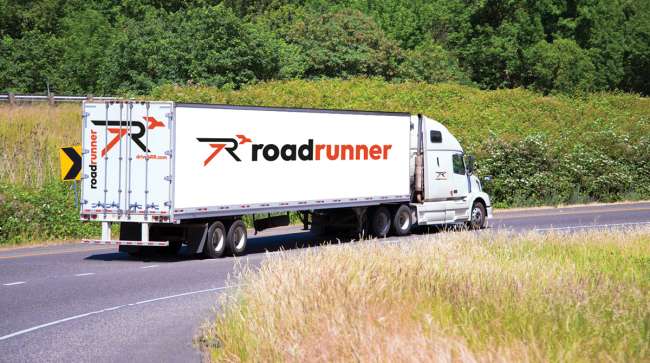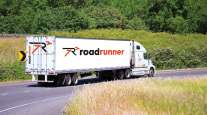Staff Reporter
Roadrunner Notches Gains in Transit Times

[Stay on top of transportation news: Get TTNews in your inbox.]
Roadrunner implemented another round of transit time improvements across its network as part of an ongoing, multiyear process to improve business operations, the company announced Jan. 5
The move marks the fourth round of transit time improvements over the past 18 months, and follows a major restructuring Roadrunner has implemented to refocus its business on core less-than-truckload competencies. The initiative aims to speed up its network across 130 major lanes.
“We needed to do something a little bit more creative rather than just throw a bunch of capacity to the shippers at a very high price,” Chris Jamroz, executive chairman at Roadrunner, told Transport Topics. “We started analyzing and — very intentionally and quite decisively — deconstructing the network that was a byproduct of some ill-guided decisions, acquisitions, add-ons and some difficult-to-understand decisions that occurred over the last decade.”
Roadrunner leadership has been working to streamline it into a stand-alone less-than-truckload carrier focused on direct metro-to-metro operations. The first major step in that plan was completed with the sale of three truckload businesses in August 2020. The company then began investing in service improvements.

Jamroz
“There’s been reduction in transit times three times before in the last 18 months, but this is the biggest one we’ve ever done,” Jamroz said. “It’s a byproduct of a year and a half of work completely digitalizing our network — deploying machine learning algorithms — to help us optimize load planning and introducing what we call the Load Plan 2.0.”
Roadrunner said its proprietary machine-learning algorithm leverages driver partner teams, multiple daily departures and customized dock automations. It stressed that its metro-to-metro and technology-focused approach allows it to keep prices in check while speeding up transit times.
“We’ve pivoted almost exclusively to teams and owner-operators so that we can accomplish much faster transit times, particularly the longer the haul of freight,” Jamroz said. “We also do multiple dispatches during the day. We have flexible loads practices in terms of loading trailers; we use a special artificial intelligence algorithm to help us load trailers faster.”
Want more news? Listen to today's daily briefing above or go here for more info
Roadrunner also chose the niche of direct metro-to-metro — where the average length of haul could be 1,600 miles — in an effort to narrow its focus, Jamroz said. “I don’t believe in being all things to all people,” he said. “We want to get excited around things that we could be absolutely the best at; it could be number one or maybe number two in our market niche. If you look at the broader LTL market, you really have extraordinarily well-established brands — very well known, great quality, fantastic operators, entrepreneurial, oftentimes still run by the original founder. It would be a little bit time-consuming and cost-prohibitive to try to replicate the footprint like that.” The metro-to-metro approach also reduced the company’s risk of damage to goods, since shipments were being handled far less, Jamroz said.
Beyond the business strategies, Jamroz also stressed the importance of workplace culture in propelling operational changes toward success.
“Technology is an enabler of great processes but culture can eat the best strategy for breakfast,” he said. “I’ve seen it happen, so we were very careful to be lockstep between the operations excellence, imagining the culture and putting the technology in place that would enable all this.”
The coronavirus also helped spur change for the carrier, he said. While the pandemic compelled an active freight environment with soaring prices, the Roadrunner management stayed focused on its plan.
“A lot of carriers responded in a historically predictable way — hire more employees, order more equipment and pay employees more,” Jamroz said. “We started going deep into this about July 2020 and made Roadrunner pure-play LTL August 2020. We knew that while this window seemed extraordinary attractive, it probably would not last.”
Roadrunner ranks No. 77 on the Transport Topics Top 100 list of largest for-hire carriers in North America.



